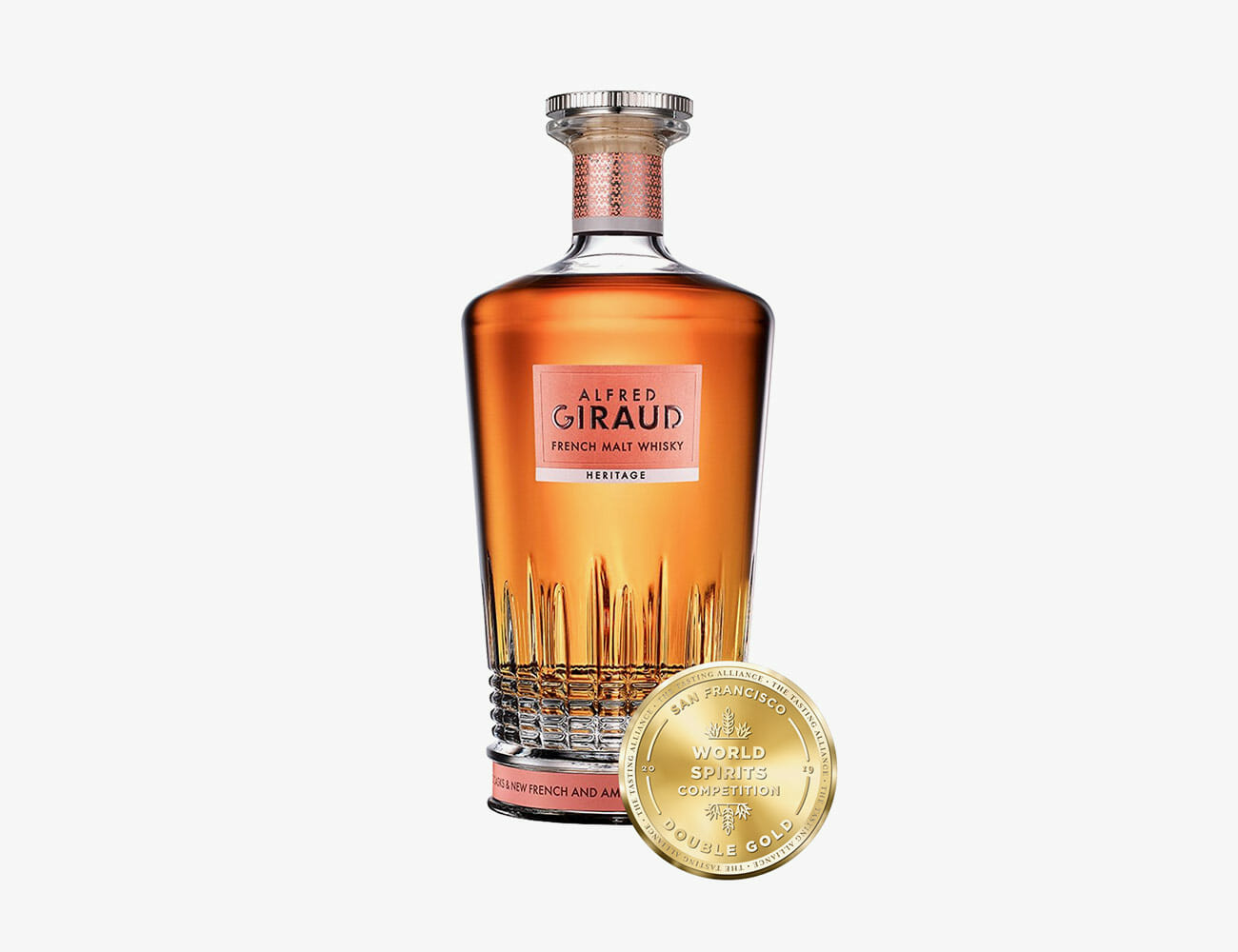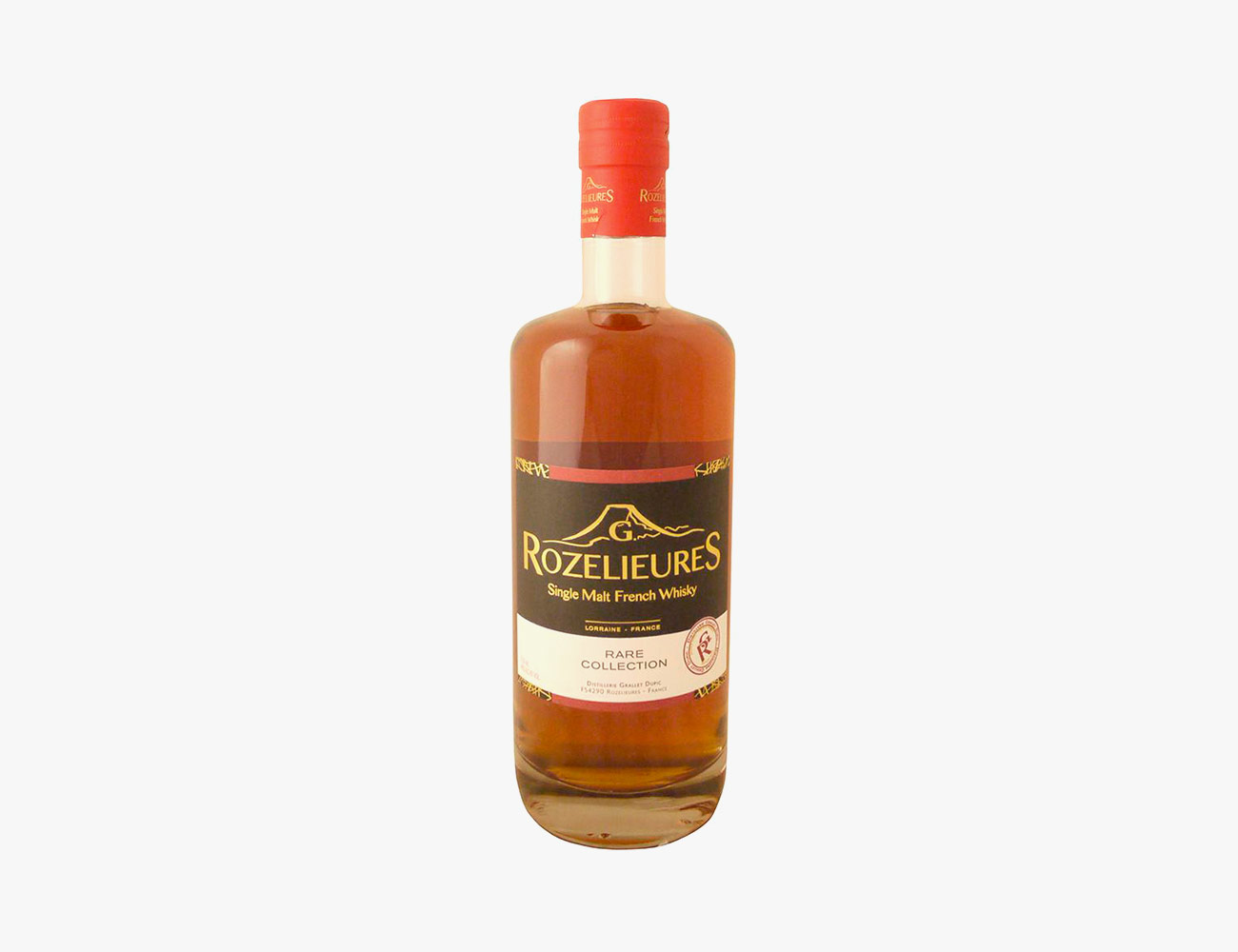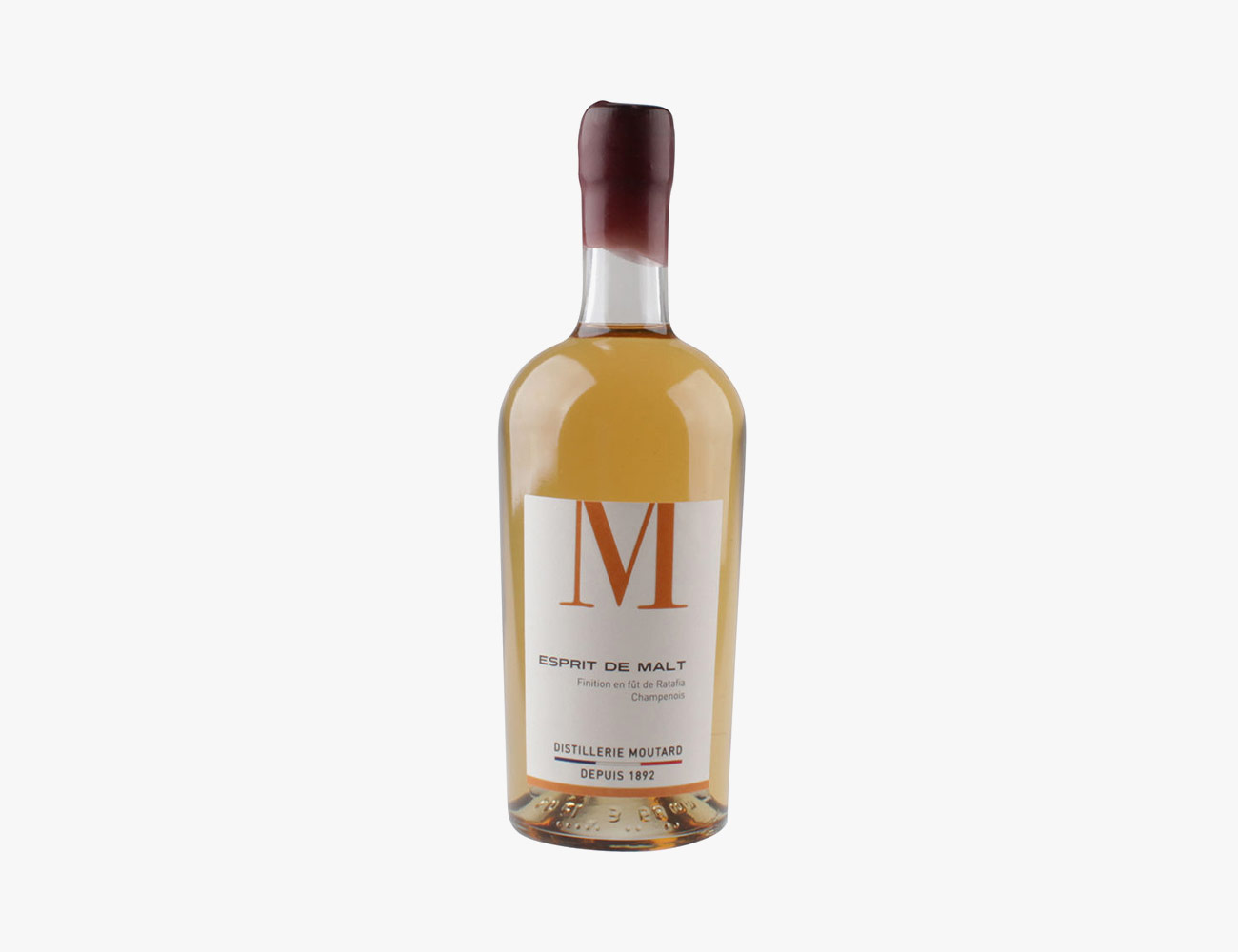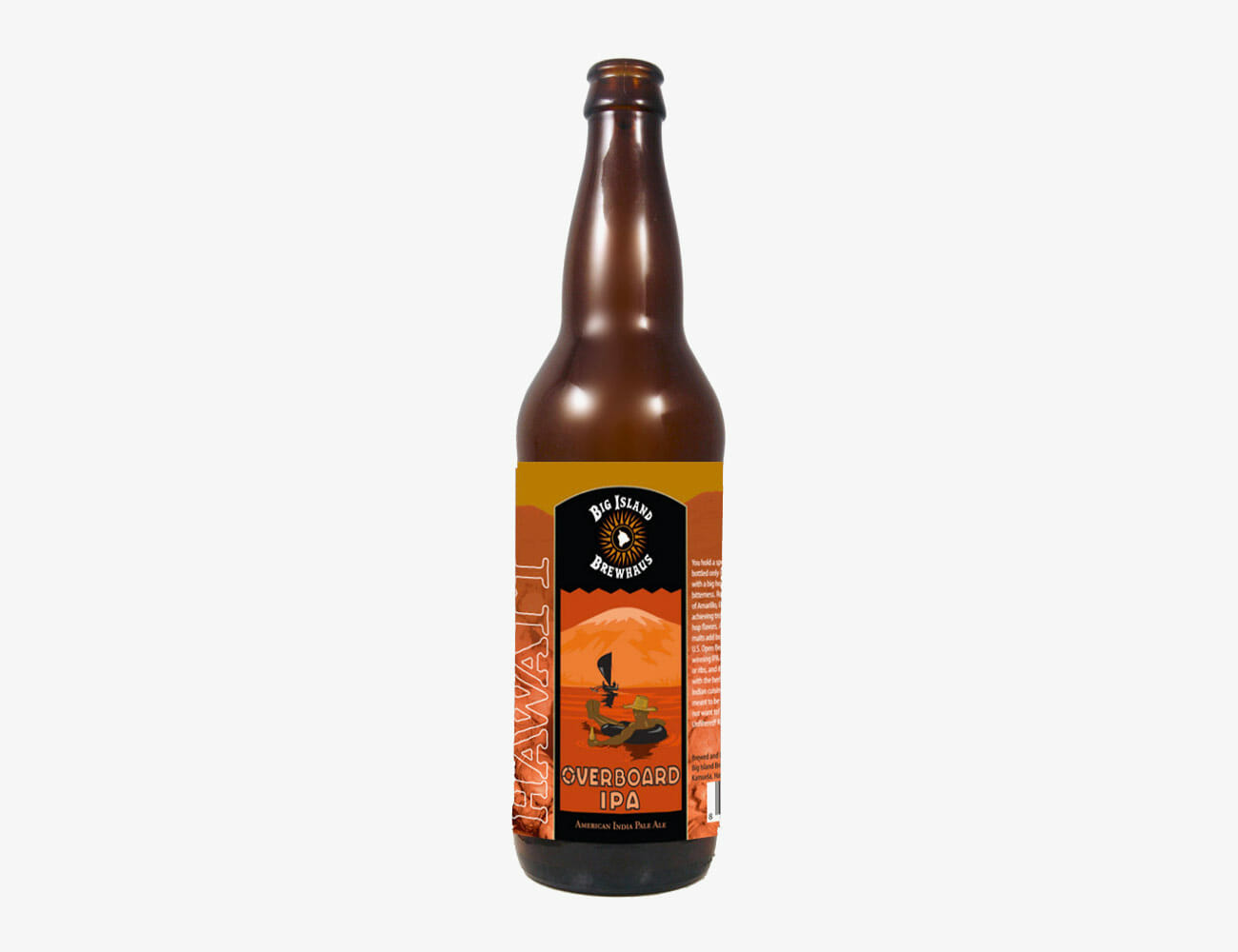The fifteenth dram in my flight of French whisky is Armorik Double Maturation Single Malt, and I’m slightly relieved it’s the last. It looks delicious, especially golden thanks to the copper hue inside New York City’s Brandy Library, and tastes even better. Owner (and Frenchman) Flavien Desoblin hints that he’s got a few more bottles stashed away, but my palate is tapped out. “We don’t sell many French flights,” he laments, gesturing to a near-full Brenne 10-Year Limited Edition bottle that he’s had for a few years. “It’s a shame because this is a very exciting time. Soon, French whisky could be as big as Japanese whisky.”
It’d be easy to mistake Desoblin’s giddiness for the burgeoning French whisky category as national pride, but when you consider that France is the number one consumer of whisky, per capita, of all countries, and that there are currently 60 active distilleries in France, while another 40 have applied for licenses in the past year alone, you can see where Desoblin is coming from. We’re about to get hit with a crush of French juice, right as Japanese distillers are forced to discontinue age statements — and even some blends — because we drank it all.
Between cognac, Armagnac and brandy, French distillation has deep generational roots, but the demand for whisky is far higher. “French law limits cognac production to specific months so the distillers started making whisky in the off-seasons,” Desoblin shares. “When cognac wasn’t doing great, farmers got government subsidies to uproot grape vines to plant barley and other grain fields. Now everyone’s realizing the terroir in many regions where smaller distillers are cropping up is really suited for the grains.”
Now a hotbed of distilleries, Brittany is considered the origin of French whisky. Home to makers like Armorik, a distillery that’s been churning out under-the-radar, pot stilled single malt juice that rivals any scotch in a blind tasting for decades. Desoblin notes that the terroir not only factors in the glass — a whisky from Charente (a cognac region) or Gers (an Armagnac region) will have a different flavor profile than an Alsace (a riesling region) offering — but it’s used as a vital marketing tool to differentiate brands since the French whisky is still too nascent to have a distinct style unto itself.
Common traits do emerge, evident after my too-expansive flight. Generally, French whisky isn’t big and bold, like American offerings; it’s elegant and silky, soft and round, palatable and balanced. If this all sounds like Japanese whisky, you’re on the right track. “The French palate likes substance and complexity,” Desoblin says. He points to Alfred Giraud Heritage, a triple malt blend aged in extremely rare ex-cognac casks that is so absurdly divine, I attempt to lick any remnants from the empty dram. “This is the turning point of French whisky,” he beams. “It’s incredible. When we look back in fifteen years, we’ll say [owner and founder] Philippe Giraud changed the whole game.”
The kicker: the liquid in the bottle is a mere three years old, far less than high-end whiskeys made Stateside. If you were French, or you knew Philippe Giraud, you might not mind.
The whisky inside the Alred Giraud Heritage bottle is the result of decades of blending and aging knowledge. Giraud is a renowned name within the cognac community. Philippe’s great-grandfather Alfred, for whom the brand is named, was the cellar master of Remy Martin for more than 30 years, while Philippe’s uncle was a master cooper (a barrelmaker). “We’ve since built a distillery,” Giraud says, “but we started buying the best distillates we could find. We debated because we could have a single malt in a few years, but we have four generations of blending knowledge. We wanted to use it.”
Those choice single malt selections, including Rozelieures from Lorraine and Armorik from Brittany, were perfect for Georges Clot, the brand’s master blender (another former Remy cellar master, too). They’re placed into new oak casks, made from a Giraud family forestry operation. “We cut our trees and split the wood because the wood has to stay outside in the rain and the cold for one to two years,” Giraud explains. “You want the rain and weather to wash away the strongest tannins, but you still need enough to give the whisky structure.”
Twelve to 18 months later, the first marriage happens and the blend heads into the ex-cognac casks, all of which are at least 30 years old, with plenty pushing 50. “[Ex-cognac casks] gives it sweetness and a gourmand touch that’s typical of old cognac,” Giraud says. “You can taste a hint of it and it’s even in the nose, to some extent.” The rareness of the casks means the whisky is rare, too; a mere 5,000 bottles of Heritage are produced annually (a subtly peated iteration, Harmonie, is limited to a scant 2,000), and it’s only for sale in New York, though a few additional states will see it in 2020.
Recently, the distiller became the first French whisky to malt its own barley, after outsourcing frustrations abounded. By growing, picking, and malting its own barley, Giraud believes complete control over the process will enable a higher quality product. Downfield, Giraud is experimenting with different kinds of wood and casks that contained Armagnac or white wine, hoping to have a new innovation on shelves by the winter.
Desoblin notes that hurdles and headwinds still exist for French whisky. “Japanese food, particularly sushi, has become integrated into our lives, so whisky as an extension of that was something we can easily understand,” he says. “French food and culture don’t have that same level of penetration, so it’ll take a bit to catch on.” Our bet: it won’t take long.
What to Look for
Editor’s Note: Due to limited production, distribution in the United States isn’t widespread, meaning few French whiskies are widely available. Check for availability at your local liquor store.
Alfred Giraud Heritage Malt Whisky
The one to beat. Floral and spice notes meld well and hints of pear pop on your palate. The new oak creeps in slightly but is balanced by the sweetness from the cognac. If you can find it, it runs between $150 and $200.
Rozelieures Rare Single Malt Whisky
This single malt from Loraine was the first from the region to open, back in 2000. It matures in old sherry, cognac, and sauternes casks, and the resulting liquid is rich and luscious, with plenty of dried fruit notes. Rozelieuers’ Smoked version, made with local peat, is equally divine. You can find it for about $50.
Moutard Esprit de Malt
Champagne producers Moutard age this two-year-old whisky in ex-champagne barrels and ex-ratafia barrels. The latter is a fortified wine produced from champagne grape remnants. You can taste the youth in the glass but it’s lively and delicious. It’ll come to the US later this year.
Armorik Double Maturation Single Malt
Aged for at least 12 years, this drinks like a single malt scotch. Some notes of the sea seep into the maturation process from coastal Brittany distiller Warenghem, who only uses local oak and grains, giving it a wholly unique and full flavor with a long, welcome finish. Where available, it’s typically around $80.
Brenne Single Malt 10 Year
Four perfectly blended single barrels comprise this soft, fruity, super-drinkable ten-year-old. Hints of honey and cherries shine through. While it’s light-bodied, it’s heavy on flavor. You can drink this one all night.








